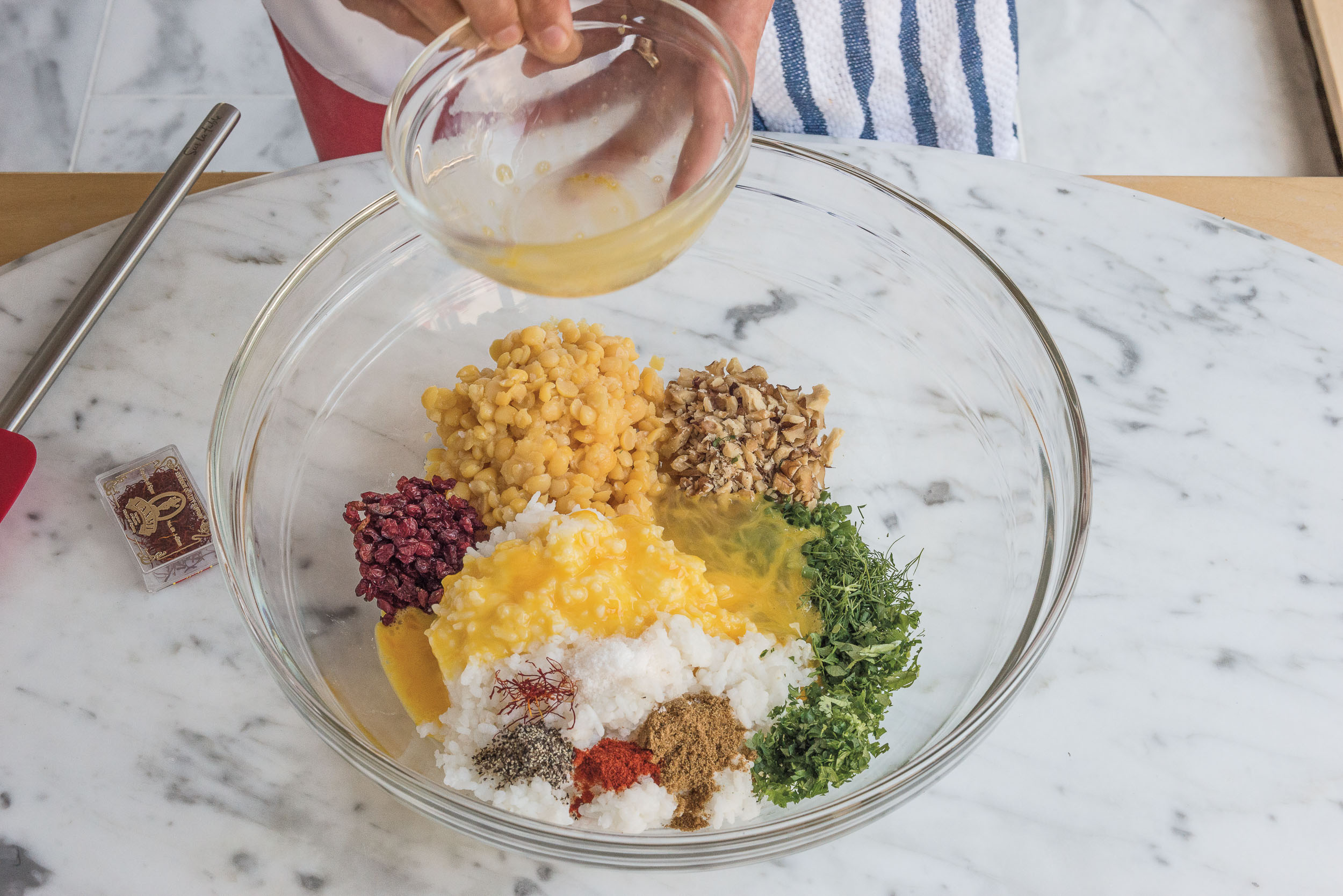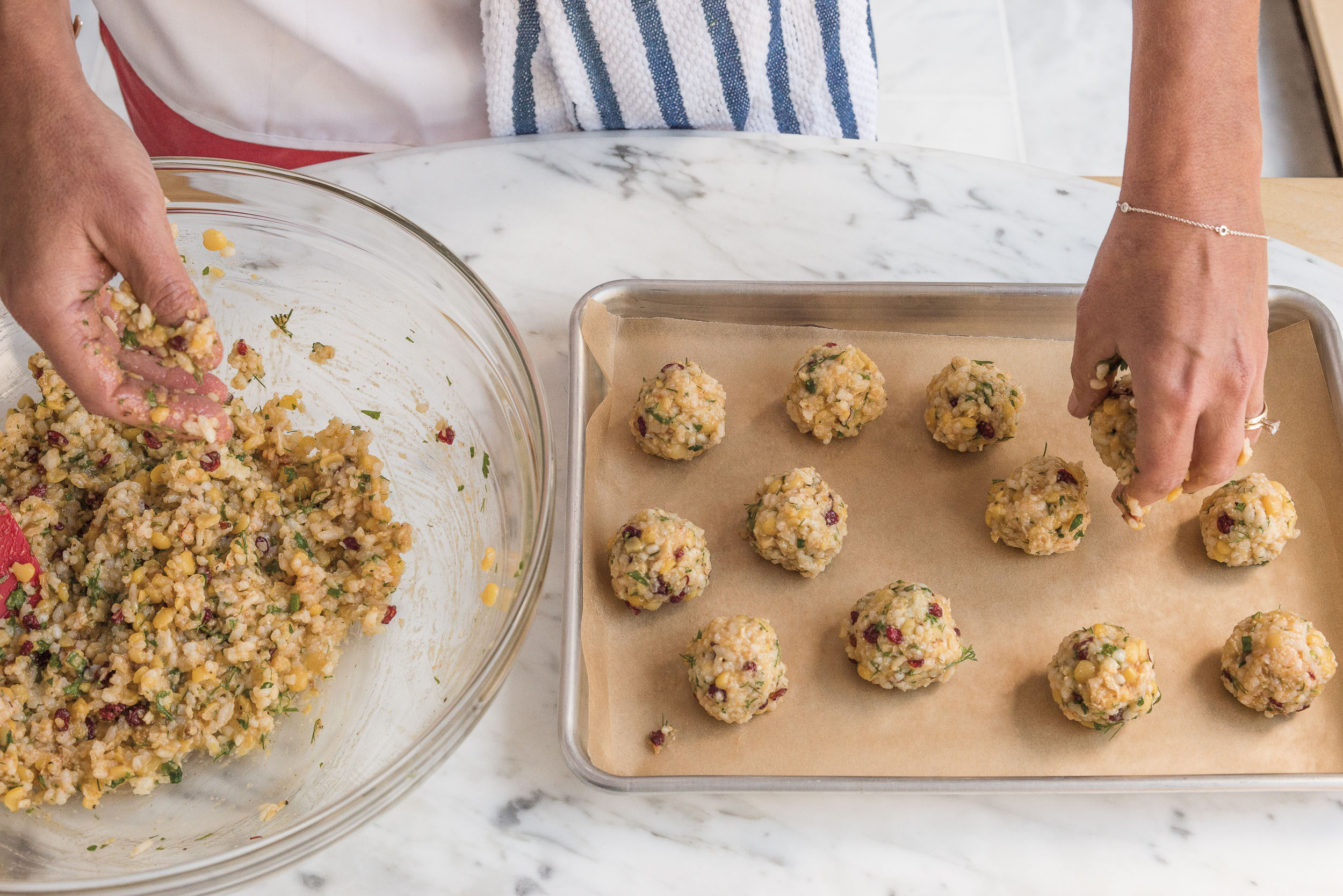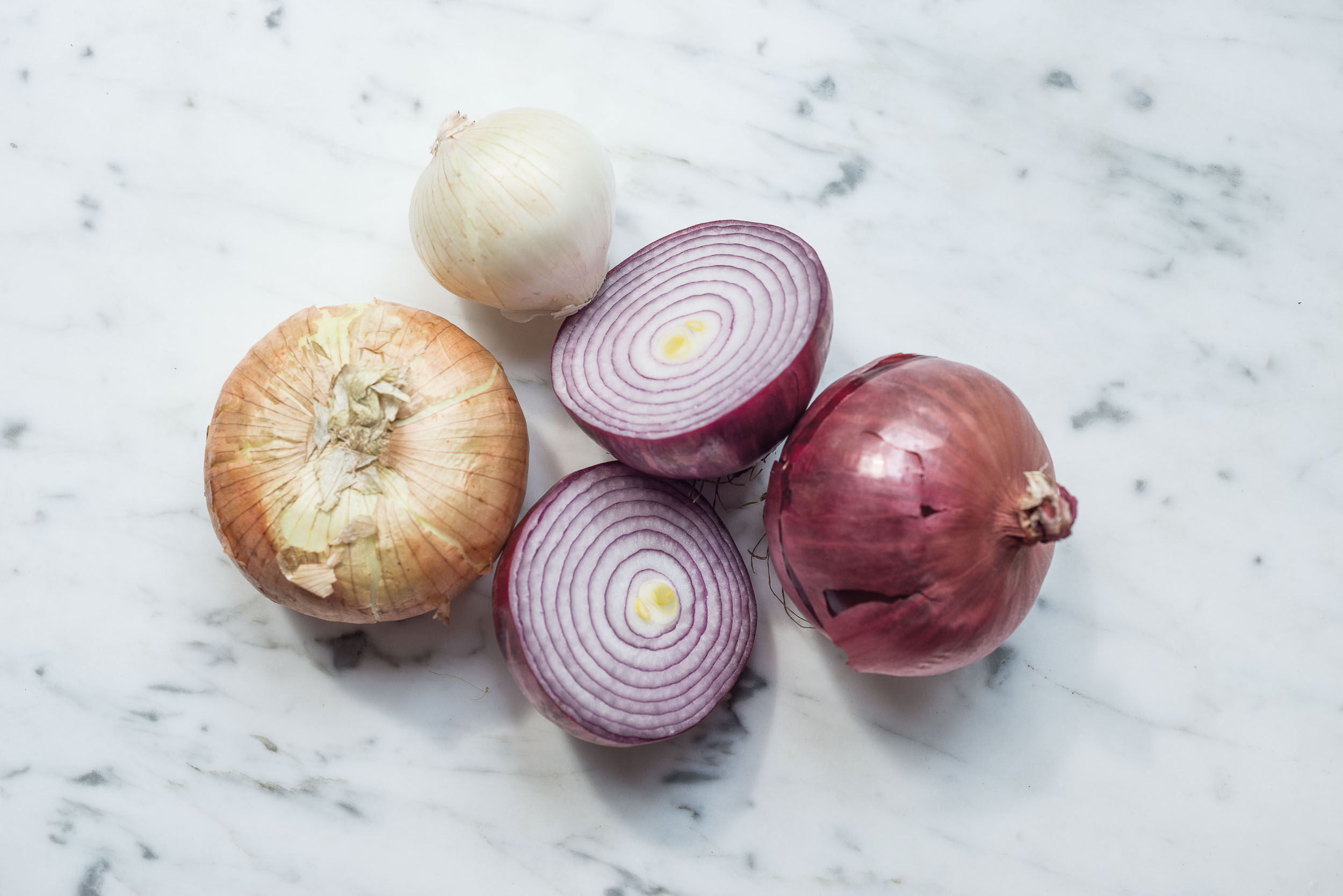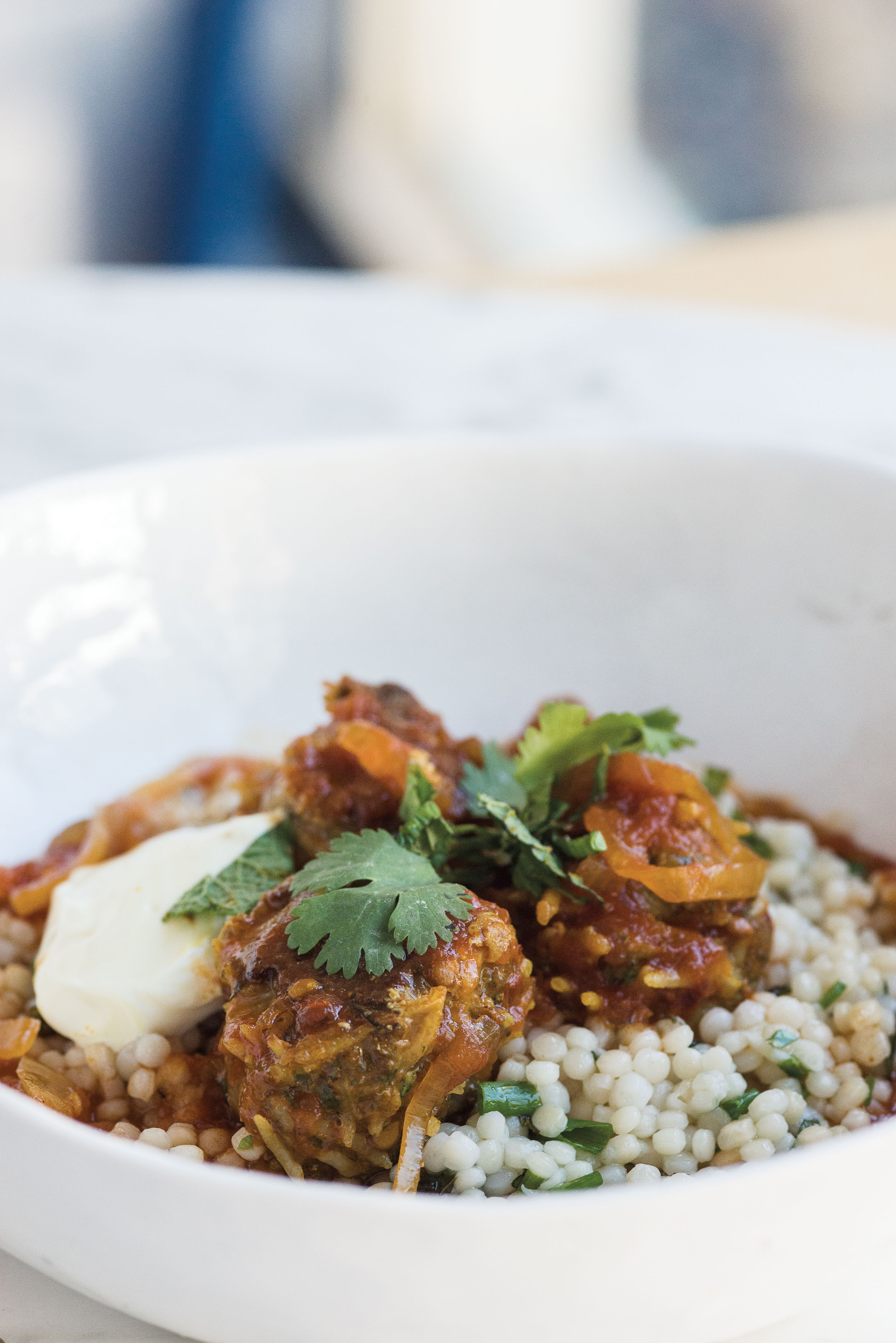(Meat)balls

Chef Julie Francis of Nectar Personal Chef teaches the art of forming delicious ingredients into balls.
photos by Julie Kramer / recipes by Julie Francis
Pretty much every global cuisine does it: Mix a main ingredient with a starch (perhaps breadcrumbs or rice) and a binder (usually egg), shape the mixture into balls, and then cook in oil or sauce. We thought the humble meatball (or, as the case may be, the vegetable ball, which doesn’t really roll off the tongue in the same way) is a subject worth exploring. We asked chef Julie Francis to show us the way. Following her summer trip to the South of France where she studied Persian cooking, Francis brought a delightfully unexpected flavor profile to our project.
“Who doesn’t love meatballs?” asks chef Julie Francis. It’s a great question. Meatballs and their vegetarian cousins are natural people-pleasers, beloved by kids and grownups, easy to make in quantity to serve for a party.
The Basic Technique
Whether you’re using ground meat or minced vegetables, meatballs—and we’ll use ‘meatballs’ here as a generic term for both variations—there’s a basic formula, Francis says. It includes the main ingredient plus the binding ingredients in a ratio of 4 to 1. So for a pound of meat (or equal quantity of vegetables), you’ll want 3 ounces (about 1/4 cup) of cooked rice or breadcrumbs, and 1 large egg. Then you’ll need aromatics, typically finely minced onion and/or garlic, and seasonings. “You can go crazy with the seasonings,” Francis says. “Meatballs are a blank canvas.”
When mixing and shaping your meatball ingredients, it’s best to gather everything into a large bowl as shown at right, and use a fairly light hand, particularly if you’re using ground meat, to keep the results tender. Francis’s Persian Herby Vegetable Meatball recipe here takes a bit more kneading to get the rice and lentils to stick together.
Saucing & Serving
No matter how flavorful your meatballs, they’ll want some kind of sauce to bring the dish to life. Around the world, meatballs are typically simmered in some kind of tomato sauce, although Middle Eastern meatballs like falafel and kibbeh are often dressed with tahini and/or plain yogurt.
These sauces are typically highly flavored with lots of garlic and spices: dried oregano and basil for Italian-style meatballs, curry for Indian kofte, turmeric and pomegranate molasses for Francis’s Persian variation. (Find the recipe for her Sweet & Sour Tomato Sauce here).
Meat-based balls need to be seared in a bit of oil before finishing in the sauce; just sear on two sides, and don’t move them around much so they keep their shape. Vegetable balls can cook right in the sauce. Keep your sauce at a gentle simmer, not a boil, so meatballs don’t completely fall apart.
For serving, a scattering of freshly chopped herbs, a spoonful of yogurt, or a pile of grated cheese is always appropriate, depending on the flavor and cultural profile you’re aiming for.
Mix & Shape
Persian cuisine: a few notes
Persians are one ethnic group that makes up the cultural fiber of modern Iran, and they had a major influence on the country’s cuisine. The main components of Persian cooking are meat, rice, vegetables, and nuts. Francis says there’s a strong sweet-sour element to Persian cooking, with the sweet notes coming from dried fruits like prunes, apricots, and raisins and the sour notes from dried lime. Pomegranate, cumin, cinnamon, turmeric, saffron, and fresh parsley and cilantro are also key ingredients.
At the invitation of former Nectar patron, Arash Babaoff, Francis traveled with a small group to Southern France in 2018 to take cooking classes with his mother, Azam Babaoff. The classes were held at Le Petit Conservatoire des Saveurs, in St. Clement, France. That experience inspired Francis to incorporate Persian flavors into her cooking, including the recipes she shares here. Find specialty ingredients like dried limes, barberries, and pomegranate molasses at Jungle Jim’s and Dean’s Mediterranean Market.
Bryn’s long career in publishing took a left turn sometime around 2010, when she discovered the joy of food writing. Since then, she’s found professional nirvana as the editor of Edible Ohio Valley, author of The Findlay Market Cookbook, and occasional instructor at The Cooking School at Jungle Jim’s. Find her seasonal recipes at writes4food.com.








